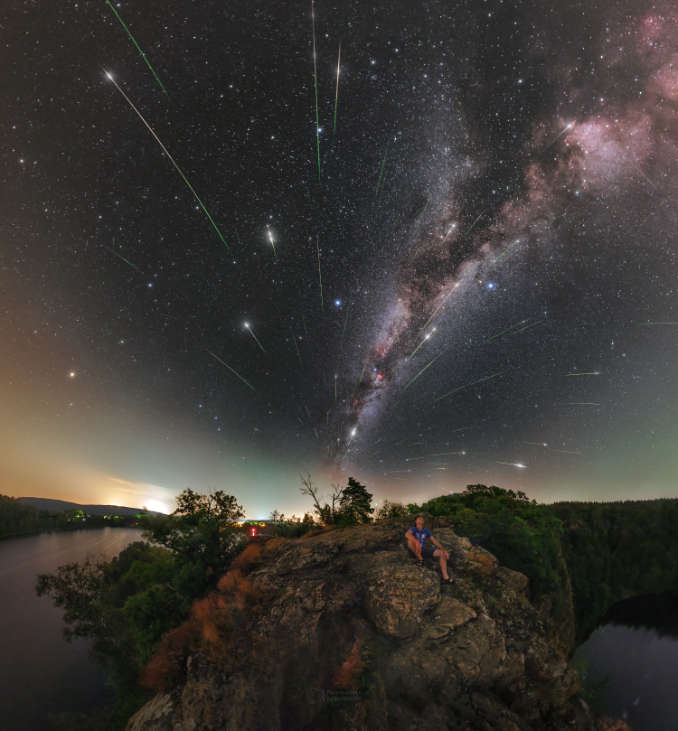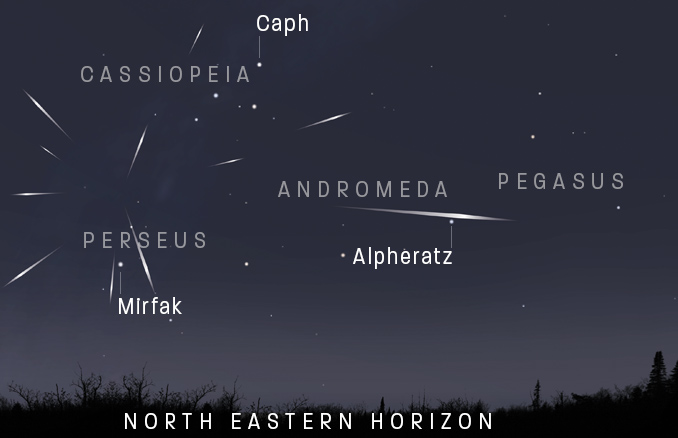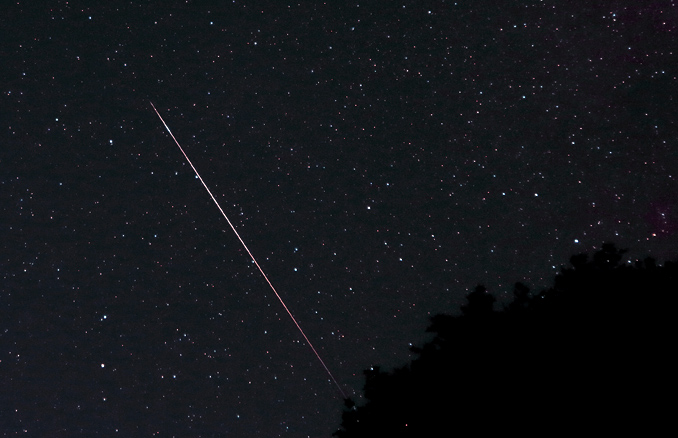It’s that time of the year again! The Perseid meteor shower, which peaks this week, is highly anticipated by observers hoping to enjoy the spectacular sight of multiple meteors raining down during mild summer nights.

Perhaps you prefer to gaze at the sky for Perseid meteors, or maybe you let digital technology record the extravaganza instead. You might look forward to sharing the Perseid observing experience with a group of astro-society friends, or for you meteor watching might be a chance to find inner peace and solitude under a star-strewn sky. However you choose to watch, and whether you’re in it for the science or just for fun, the Perseids provides something for everyone.
Where do Perseids come from?
When comets wing their way through the inner Solar System, their surfaces are heated by the warming Sun and they become more active. Some cometary material is lost and particles ejected, which over time spread out along the comet’s orbit around the Sun. When Earth intersects this stream of particles then a number of them enter our upper atmosphere, vaporising to form the streaks of light we see as meteors.
Each meteor shower is linked with a ‘parent comet’, with periodic comet 109P/Swift–Tuttle being associated with the Perseids. This comet has a 133-year period and last returned to the inner Solar System in 1992. Enhanced Perseid rates were seen in the early nineties, which corresponded with this return. Higher Perseid activity was last witnessed in 2016, though astronomers are not predicting elevated rates for 2021.
No Moon this year!
This promises to be a good year for the Perseids as the pesky Moon won’t interfere with observations. It’s a new Moon on 8 August, and it reaches first quarter on 15 August. The Perseids have an extreme range of activity from 17 July to 24 August, with rates of meteors expected to peak between 19h and 22h UT (8pm and 11pm BST) on 12/13 August, though some sources quote the maximum occurring later at 02h UT (3am BST).
Reports are already flooding in of Perseid activity, including NASA cameras capturing more than a dozen of Perseid fireballs across the USA on the night of 5 August.
When to observe and where to look
The most profitable nights to look for Perseids are 11/12 and 12/13 August, though you should be prepared to stay up until past midnight and into the small hours or longer if you want to see your fair share of meteors. The crescent Moon sets by 10pm BST both nights.
During all meteor showers, the shooting stars belonging to the shower (i.e., not sporadic, or random, meteors, which occur frequently every night) can be traced back to an area of sky called the radiant. The Perseid radiant lies in the far north of Perseus (see the graphic) and lies low in the north-eastern sky as darkness falls, climbing to a decent altitude of 50 degrees or so by 2am BST. By this time, the areas of the sky where Perseids are more likely to appear will be much better placed than prior to midnight.

To further your chances of seeing the maximum amount of Perseids, don’t peer intently at the spot in the sky where the radiant lies, although this advice may seem counter-intuitive. Perseid meteor trails or streaks here will appear short and therefore harder to see. You will see many more shooting stars if you observe an area of sky 30-40 degrees from the radiant (from where, meteor streaks may appear longer) and around 50 degrees above the horizon.
How many shooting stars will I see?
One can never be entirely accurate when it comes to predicting observed rates of meteors for any meteor shower. On an average year, assuming a cloudless and haze-free sky at a dark viewing site, observers can expect to see between 50 and 70 Perseid meteors each hour near the peak. In towns or cities, observed rates may still be around ten per hour in the early-morning hours when the radiant is high.

The Perseids are renowned for producing an abundance of bright meteors and fireballs that often leave lingering trails or trails, though they still produce more faint meteors than bright meteors; this is where observing under a dark sky really pays dividends. The Perseids produce swift meteors, entering the upper atmosphere at 60km/second.
It will pay to do some prior research into finding a good site from which to observe if your back garden or regular spot has a poor view towards the east. Wherever you observe from, make sure that you have a comfortable observing position – a sun lounger or deck chair is a good choice – and if you can, then get dark-adapted for at least 15 to 20 minutes before starting a meteor watch.
Let’s hope for clear skies!
